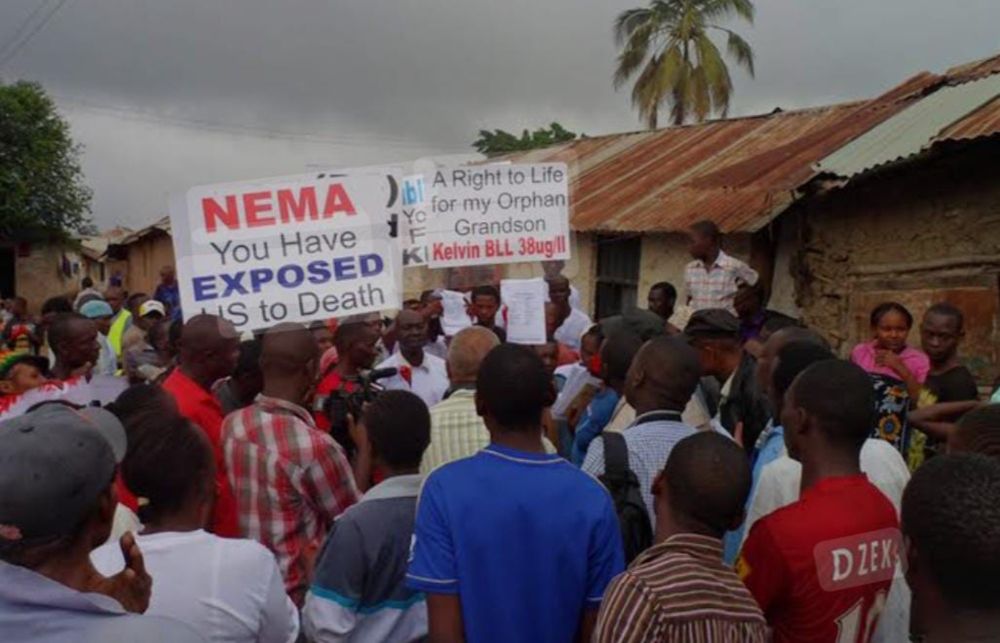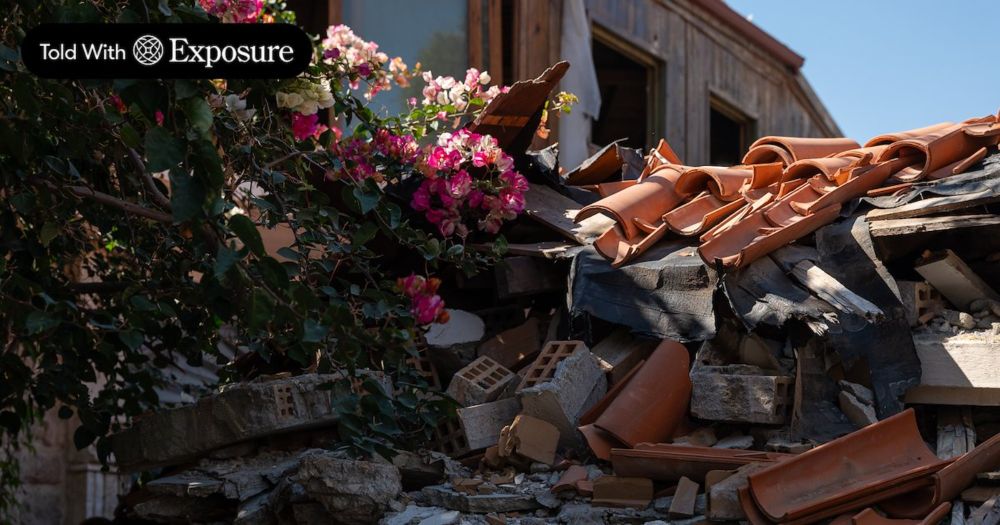New thinking from the Lab 👇
15.07.2025 09:40 — 👍 0 🔁 1 💬 0 📌 0
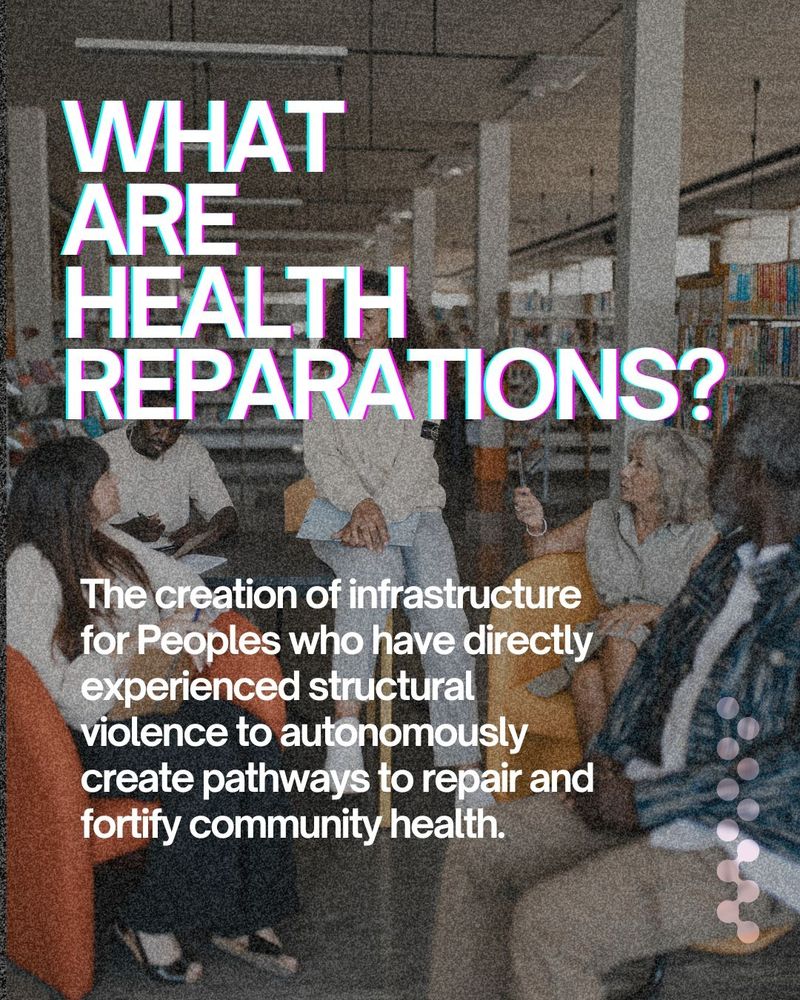
What are health Reparations?
The creation of infrastructure for Peoples who have directly experienced structural violence to autonomously create pathways to repair and fortify community health.
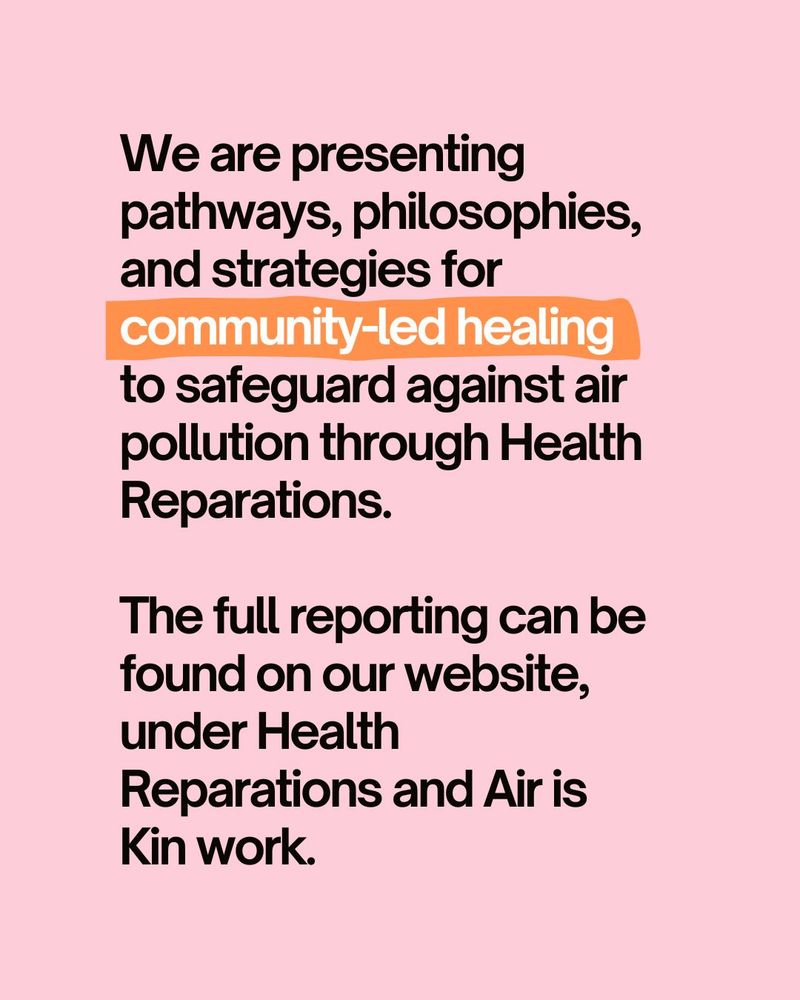
We are presenting pathways, philosophies, and strategies for community-led healing to safeguard against air pollution through Health Reparations.
The full reporting can be found on our website, under Health Reparations and Air is Kin work.
A Case for Health Reparations For Communities Affected by Air Pollution.
This work lays out pathways and theories to nurture our communities, create infrastructure for autonomous healing processes, and live through this epoch with dignity.
www.thecentriclab.com/stories-prov...
15.07.2025 09:26 — 👍 1 🔁 1 💬 0 📌 1
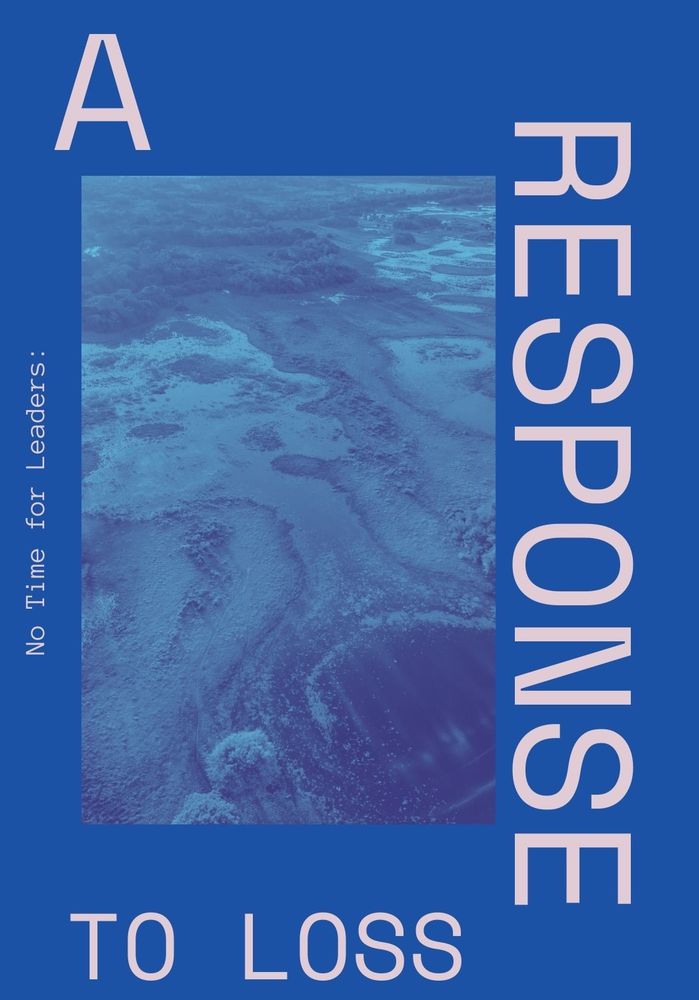
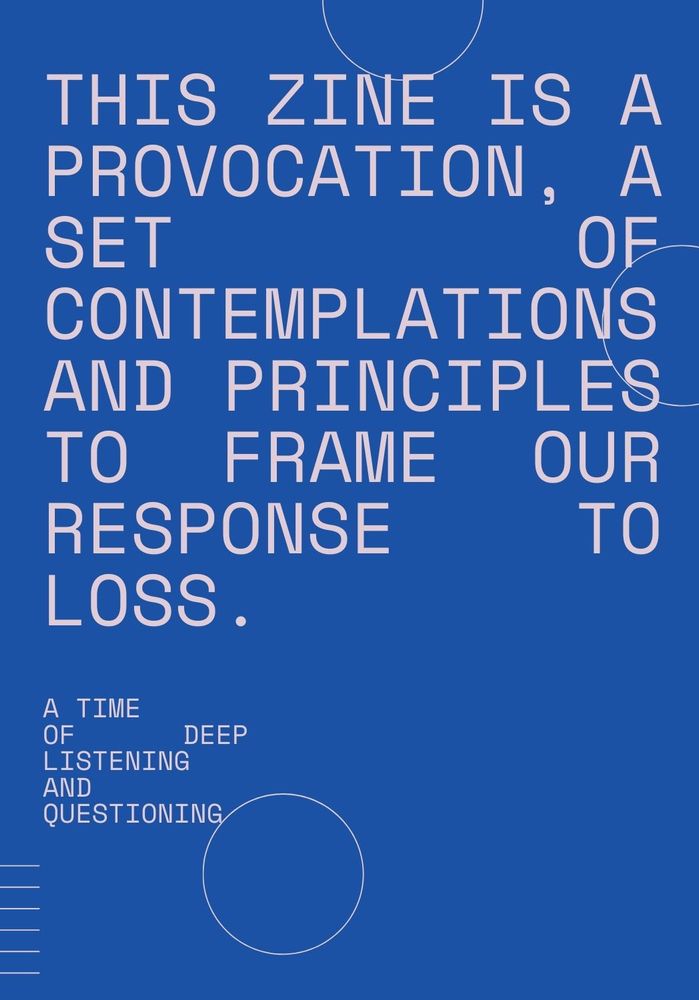
This zine is a provocation, a set of contemplations and principles to frame our response to loss. A time of deep listening and questioning.

Setting our Intention.
The intention of this document is to declare how we at Centric Lab are going to respond to the loss we are facing.
In particular, how are we going to heal when the loss and trauma is on-going and when resources become increasingly unavailable.
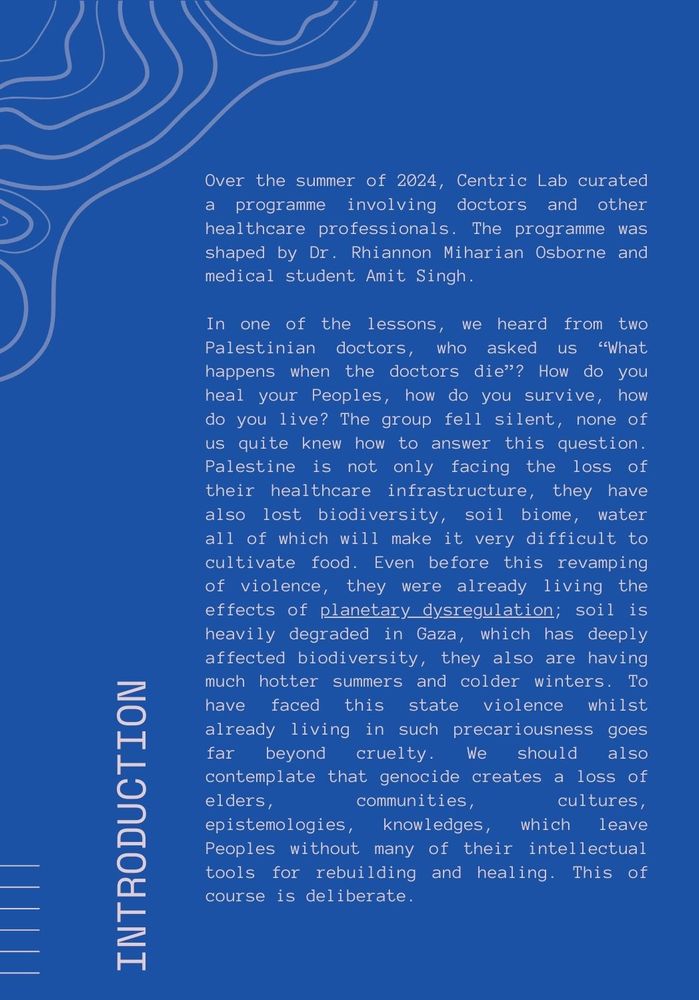
Introduction.
Over the summer of 2024, Centric Lab curated a programme involving doctors and other healthcare professionals. The programme was shaped by Dr. Rhiannon Miharian Osborne and medical student Amit Singh.
In one of the lessons, we heard from two Palestinian doctors, who asked us “What happens when the doctors die”? How do you heal your Peoples, how do you survive, how do you live? The group fell silent, none of us quite knew how to answer this question. Palestine is not only facing the loss of their healthcare infrastructure, they have also lost biodiversity, soil biome, water all of which will make it very difficult to cultivate food. Even before this revamping of violence, they were already living the effects of planetary dysregulation; soil is heavily degraded in Gaza, which has deeply affected biodiversity, they also are having much hotter summers and colder winters. To have faced this state violence whilst already living in such precariousness goes far beyond cruelty. We should also contemplate that genocide creates a loss of elders, communities, cultures, epistemologies, knowledges, which leave Peoples without many of their intellectual tools for rebuilding and healing. This of course is deliberate.
No Time for Leaders
We have created this zine as a framing that helps guide our work moving forward.
www.thecentriclab.com/stories-prov...
25.03.2025 08:34 — 👍 2 🔁 0 💬 0 📌 0
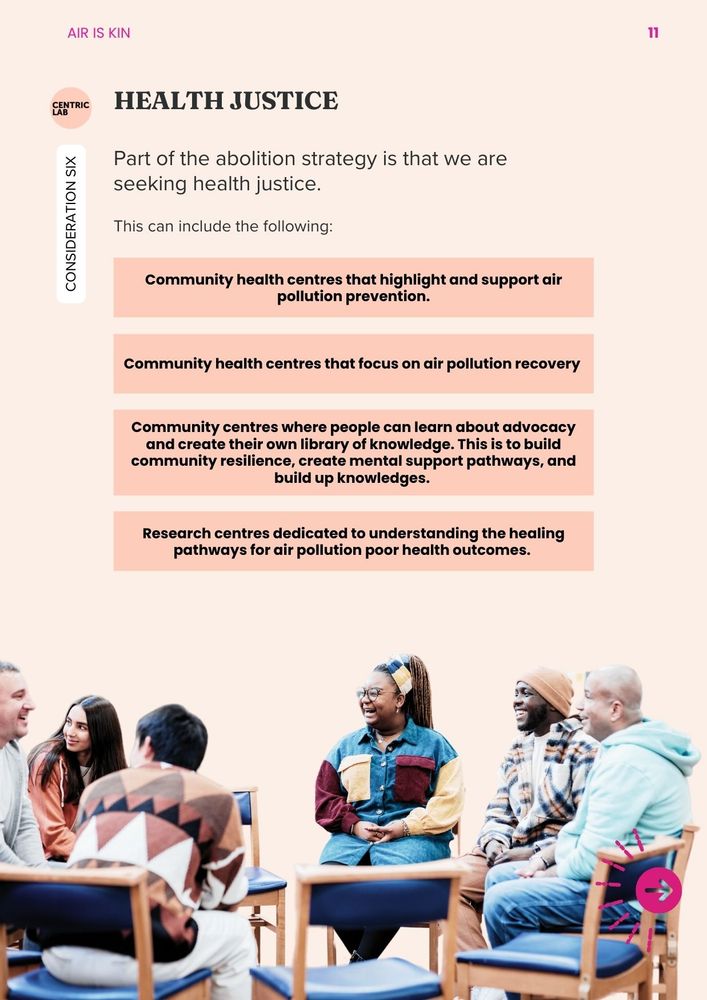
Consideration 6: Health Justice
Part of the abolition strategy is that we are seeking health justice. This can include the following: (more integrated to other types of knowledge)
Community health centres that highlight and support air pollution prevention.
Community health centres that focus on air pollution recovery
Community centres where people can learn about advocacy and create their own library of knowledge. This is to build community resilience, create mental support pathways, and build up knowledges.
Research centres dedicated to understanding the healing pathways for air pollution poor health outcomes.
An integrated approach.
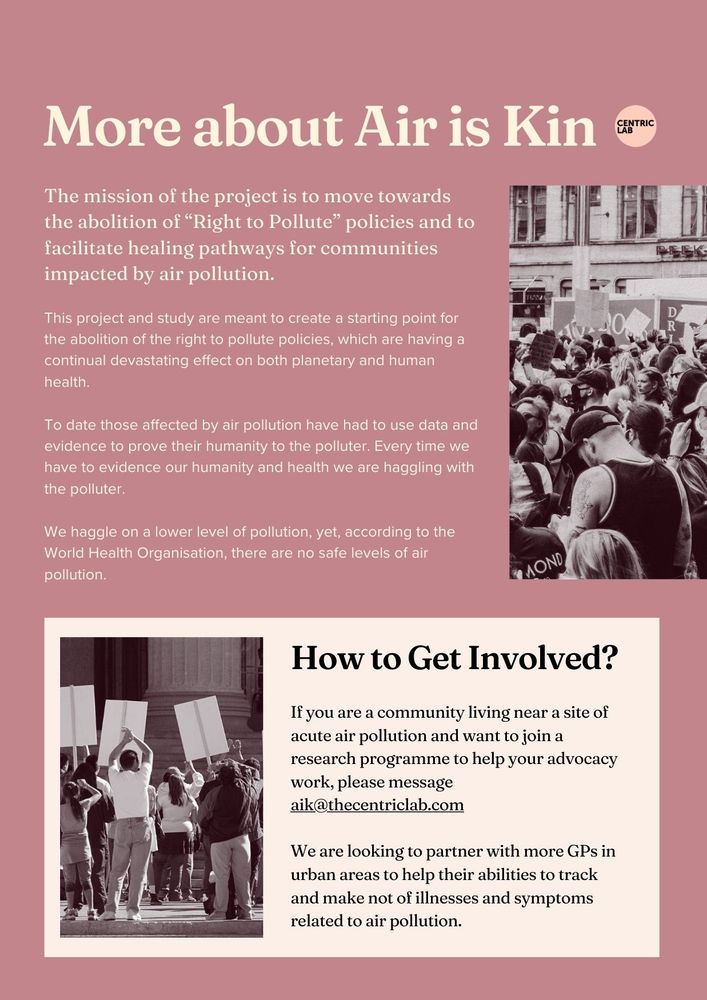
More about Air is Kin.
The mission of the project is to move towards the abolition of “Right to Pollute” policies and to facilitate healing pathways for communities impacted by air pollution.
This project and study are meant to create a starting point for the abolition of the right to pollute policies, which are having a continual devastating effect on both planetary and human health.
To date those affected by air pollution have had to use data and evidence to prove their humanity to the polluter. Every time we have to evidence our humanity and health we are haggling with the polluter.
We haggle on a lower level of pollution, yet, according to the World Health Organisation, there are no safe levels of air pollution.
How to Get Involved?
If you are a community living near a site of acute air pollution and want to join a research programme to help your advocacy work, please message aik@thecentriclab.com
We are looking to partner with more GPs in urban areas to help their abilities to track and make not of illnesses and symptoms related to air pollution.
17.03.2025 10:56 — 👍 1 🔁 0 💬 0 📌 0
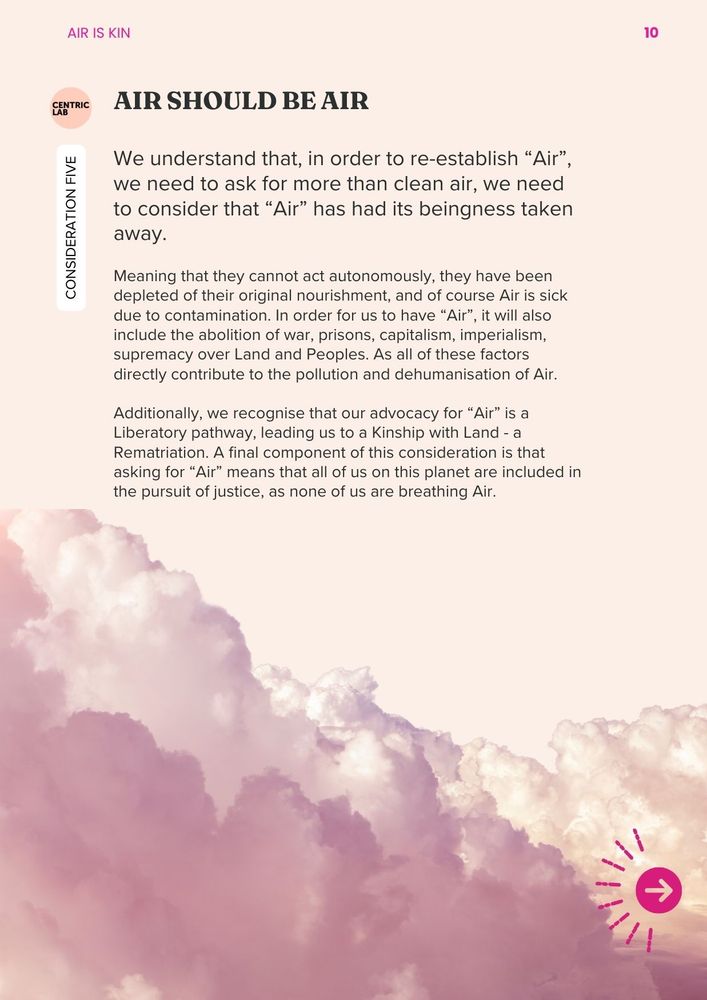
Consideration 5: Air should be Air
We understand that, in order to re-establish “Air”, we need to ask for more than clean air, we need to consider that “Air” has had its beingness taken away. Meaning that they cannot act autonomously, they have been depleted of their original nourishment, and of course Air is sick due to contamination. In order for us to have “Air”, it will also include the abolition of war, prisons, capitalism, imperialism, supremacy over Land and Peoples. As all of these factors directly contribute to the pollution and dehumanisation of Air.
Additionally, we recognise that our advocacy for “Air” is a Liberatory pathway, leading us to a Kinship with Land - a Rematriation. A final component of this consideration is that asking for “Air” means that all of us on this planet are included in the pursuit of justice, as none of us are breathing Air.
17.03.2025 10:55 — 👍 0 🔁 0 💬 1 📌 0
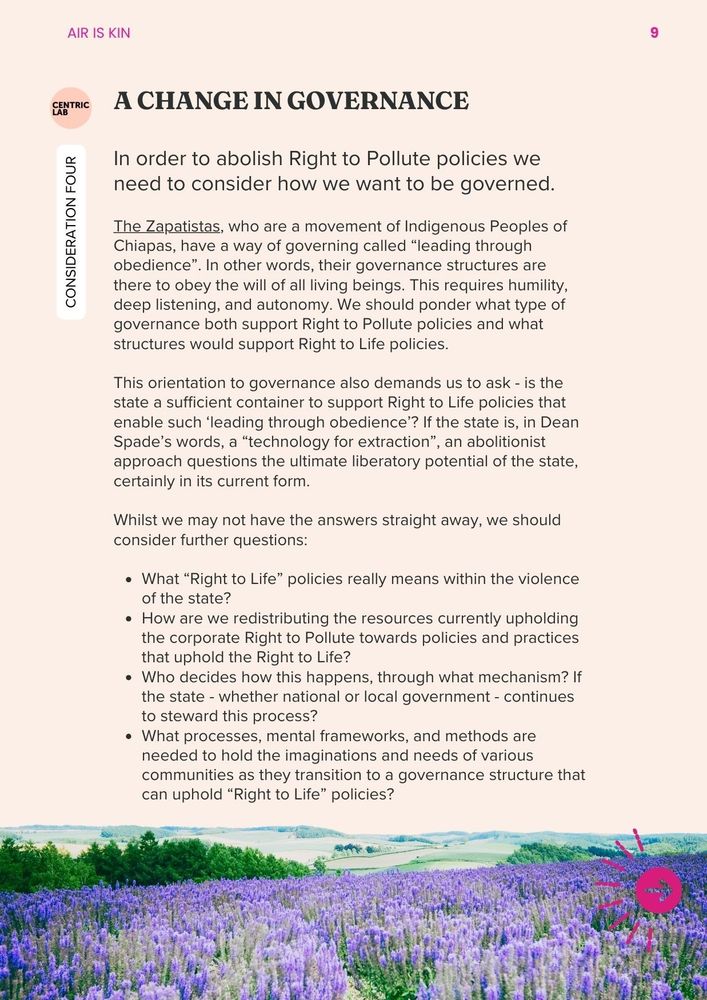
Consideration 4: A Change in Governance
In order to abolish Right to Pollute policies we need to consider how we want to be governed. The Zapatistas, who are a movement of Indigenous Peoples of Chiapas, have a way of governing called “leading through obedience”. In other words, their governance structures are there to obey the will of all living beings. This requires humility, deep listening, and autonomy. We should ponder what type of governance both support Right to Pollute policies and what structures would support Right to Life policies.
This orientation to governance also demands us to ask - is the state a sufficient container to support Right to Life policies that enable such ‘leading through obedience’? If the state is, in Dean Spade’s words, a “technology for extraction”, an abolitionist approach questions the ultimate liberatory potential of the state, certainly in its current form.
Whilst we may not have the answers straight away, we should consider further questions
What “Right to Life” policies really means within the violence of the state?
How are we redistributing the resources currently upholding the corporate Right to Pollute towards policies and practices that uphold the Right to Life?
Who decides how this happens, through what mechanism? If the state - whether national or local government - continues to steward this process?
What processes, mental frameworks, and methods are needed to hold the imaginations and needs of various communities as they transition to a governance structure that can uphold “Right to Life” policies?
17.03.2025 10:54 — 👍 0 🔁 0 💬 1 📌 0
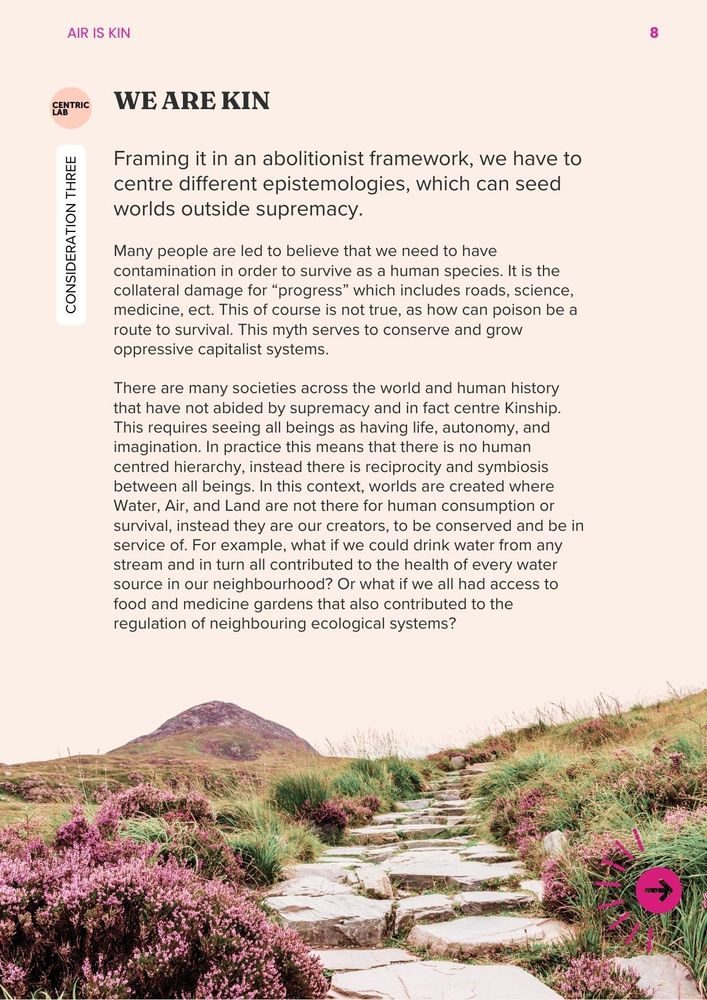
Consideration 3: We are Kin
Framing it in an abolitionist framework, we have to centre different epistemologies, which can seed worlds outside supremacy. Many people are led to believe that we need to have contamination in order to survive as a human species. It is the collateral damage for “progress” which includes roads, science, medicine, ect. This of course is not true, as how can poison be a route to survival. This myth serves to conserve and grow oppressive capitalist systems.
There are many societies across the world and human history that have not abided by supremacy and in fact centre Kinship. This requires seeing all beings as having life, autonomy, and imagination. In practice this means that there is no human centred hierarchy, instead there is reciprocity and symbiosis between all beings. In this context, worlds are created where Water, Air, and Land are not there for human consumption or survival, instead they are our creators, to be conserved and be in service of. For example, what if we could drink water from any stream and in turn all contributed to the health of every water source in our neighbourhood? Or what if we all had access to food and medicine gardens that also contributed to the regulation of neighbouring ecological systems?
17.03.2025 10:54 — 👍 0 🔁 0 💬 1 📌 0
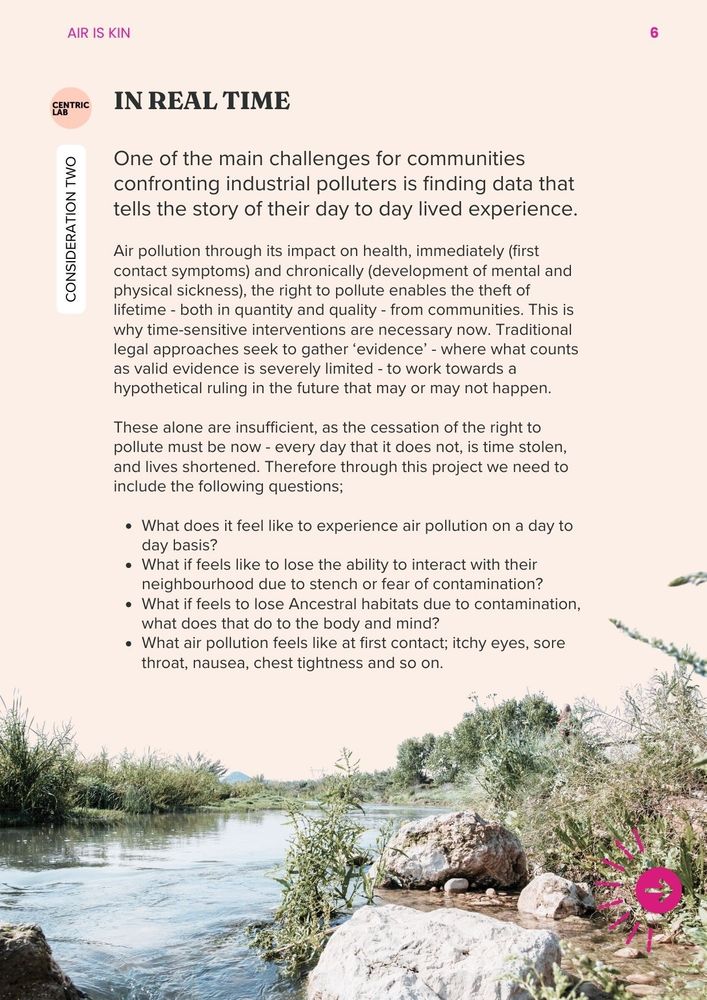
Consideration 2: In Real Time
One of the main challenges for communities confronting industrial polluters is finding data that tells the story of their day to day lived experience. Air pollution through its impact on health, immediately (first contact symptoms) and chronically (development of mental and physical sickness), the right to pollute enables the theft of lifetime - both in quantity and quality - from communities. This is why time-sensitive interventions are necessary now. Traditional legal approaches seek to gather ‘evidence’ - where what counts as valid evidence is severely limited - to work towards a hypothetical ruling in the future that may or may not happen. These alone are insufficient, as the cessation of the right to pollute must be now - every day that it does not, is time stolen, and lives shortened.
Therefore through this project we need to include the following questions;
What does it feel like to experience air pollution on a day to day basis?
What if feels like to lose the ability to interact with their neighbourhood due to stench or fear of contamination?
What if feels to lose Ancestral habitats due to contamination, what does that do to the body and mind?
What air pollution feels like at first contact; itchy eyes, sore throat, nausea, chest tightness and so on.
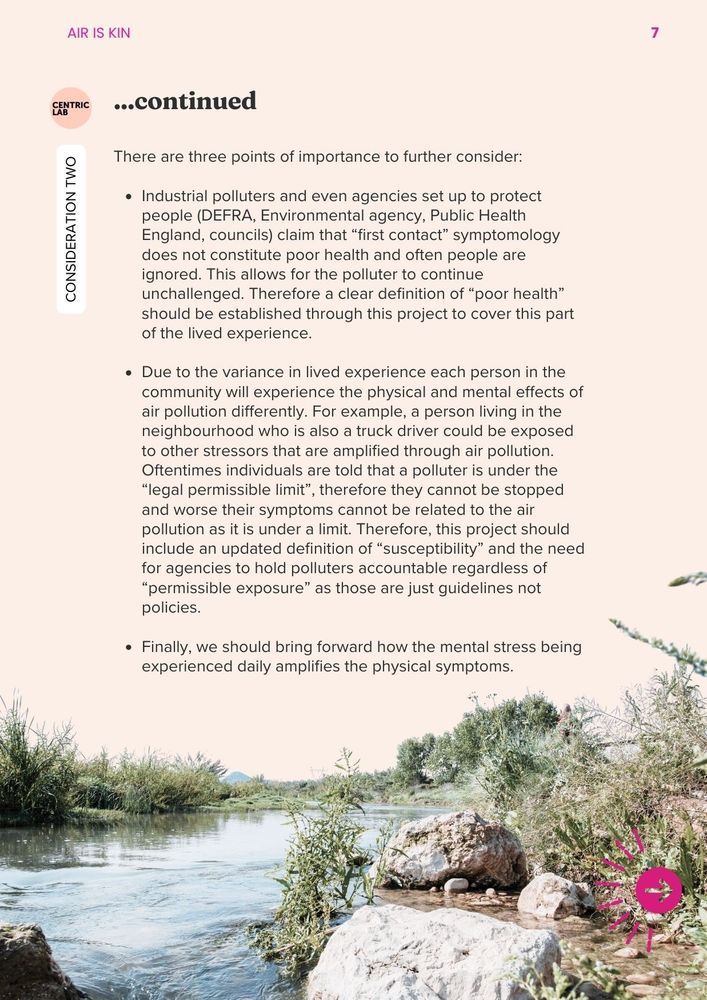
There are three points of importance to further consider
Industrial polluters and even agencies set up to protect people (DEFRA, Environmental agency, Public Health England, councils) claim that “first contact” symptomology does not constitute poor health and often people are ignored. This allows for the polluter to continue unchallenged. Therefore a clear definition of “poor health” should be established through this project to cover this part of the lived experience.
Due to the variance in lived experience each person in the community will experience the physical and mental effects of air pollution differently. For example, a person living in the neighbourhood who is also a truck driver could be exposed to other stressors that are amplified through air pollution. Oftentimes individuals are told that a polluter is under the “legal permissible limit”, therefore they cannot be stopped and worse their symptoms cannot be related to the air pollution as it is under a limit. Therefore, this project should include an updated definition of “susceptibility” and the need for agencies to hold polluters accountable regardless of “permissible exposure” as those are just guidelines not policies.
Finally, we should bring forward how the mental stress being experienced daily amplifies the physical symptoms.
17.03.2025 10:54 — 👍 0 🔁 0 💬 1 📌 0

Consideration 1: A Change of Mind
It is now a widespread philosophy that Nature and its resources exist for human consumption and “progress”. It is seen as culturally acceptable that we must tolerate certain levels of harm as the reward is human progress and economic success. However, we know that harms like air pollution are putting everyone’s health at risk. We are living with higher rates of asthma, obesity, hypertension, dementia, and cancers all which have a link to air pollution and other contaminants.
To create an abolitionist strategy we must change our cognitive framing, where we see ourselves as separate and superior to Nature. We must also see beyond the creation of extractive economies and centre human health and dignity over profits.
17.03.2025 10:52 — 👍 0 🔁 0 💬 1 📌 0
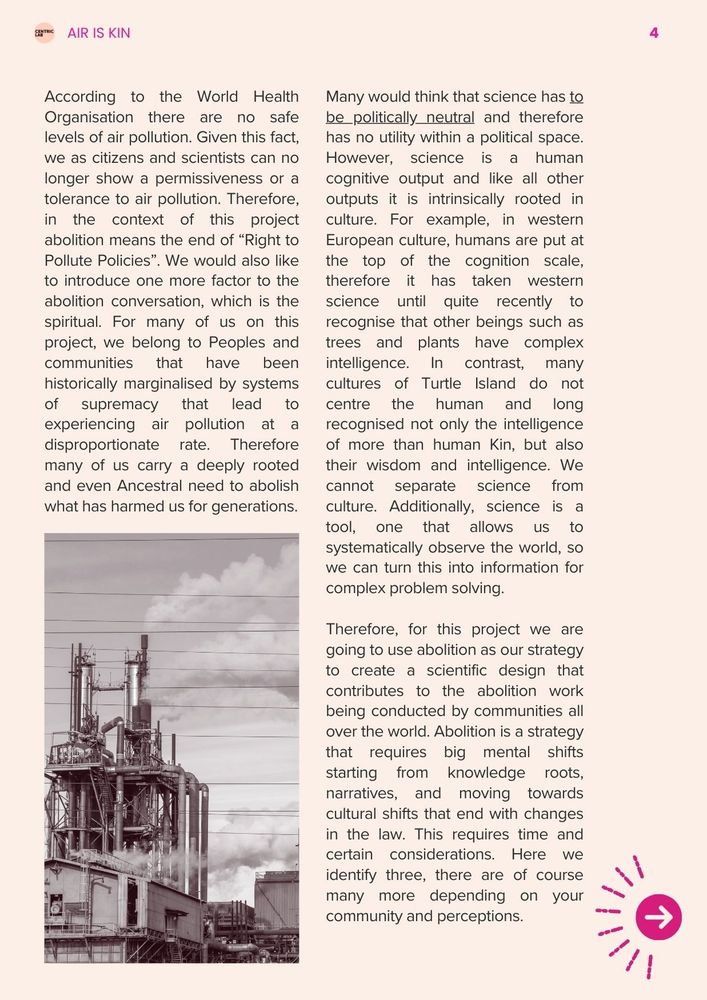
According to the World Health Organisation there are no safe levels of air pollution. Given this fact, we as citizens and scientists can no longer show a permissiveness or a tolerance to air pollution. Therefore, in the context of this project abolition means the end of “Right to Pollute Policies”. We would also like to introduce one more factor to the abolition conversation, which is the spiritual. For many of us on this project, we belong to Peoples and communities that have been historically marginalised by systems of supremacy that lead to experiencing air pollution at a disproportionate rate. Therefore many of us carry a deeply rooted and even Ancestral need to abolish what has harmed us for generations.
Many would think that science has to be politically neutral and therefore has no utility within a political space. However, science is a human cognitive output and like all other outputs it is intrinsically rooted in culture. For example, in western European culture, humans are put at the top of the cognition scale, therefore it has taken western science until quite recently to recognise that other beings such as trees and plants have complex intelligence. In contrast, many cultures of Turtle Island do not centre the human and long recognised not only the intelligence of more than human Kin, but also their wisdom and intelligence. We cannot separate science from culture. Additionally, science is a tool, one that allows us to systematically observe the world, so we can turn this into information for complex problem solving.
Therefore, for this project we are going to use abolition as our strategy to create a scientific design that contributes to the abolition work being conducted by communities all over the world. Abolition is a strategy that requires big mental shifts starting from knowledge roots, narratives, and moving towards cultural shifts that end with changes in the law. This requires time and certain considerations.
17.03.2025 10:52 — 👍 0 🔁 0 💬 1 📌 0
![Another World is Possible
Abolishing at its core is the official ending of an event, law, policy, or even state of mind. There is also a political element to the word, that has its roots in the Black and Indigenous Abolition movements which ended chattel slavery in what is illegitimately known as the Americas. The contemporary abolitionist movement refers to the dismantling of the ‘prison-industrial complex’ (PIC) - comprising “overlapping interests of government and industry that use surveillance, policing, and imprisonment as solutions to economic, social and political problems” (Critical Resistance, 2023). PIC abolition is centrally concerned with breaking cycles of violence, making legible where carcerality acts and is reproduced in proposed solutions to violence. Crucially, though, PIC abolition commits to being in perpetual practice of “rehears[ing] the social order coming into being” (Wilson Gilmore & Gilroy, 2020).](https://cdn.bsky.app/img/feed_thumbnail/plain/did:plc:orvzpvxn4wlzgprun3j3yucg/bafkreihy5ghxnnexul4zi2vxbv5mkpkuwtpbkzh2g5cn3yb3ja7djrudiq@jpeg)
Another World is Possible
Abolishing at its core is the official ending of an event, law, policy, or even state of mind. There is also a political element to the word, that has its roots in the Black and Indigenous Abolition movements which ended chattel slavery in what is illegitimately known as the Americas. The contemporary abolitionist movement refers to the dismantling of the ‘prison-industrial complex’ (PIC) - comprising “overlapping interests of government and industry that use surveillance, policing, and imprisonment as solutions to economic, social and political problems” (Critical Resistance, 2023). PIC abolition is centrally concerned with breaking cycles of violence, making legible where carcerality acts and is reproduced in proposed solutions to violence. Crucially, though, PIC abolition commits to being in perpetual practice of “rehears[ing] the social order coming into being” (Wilson Gilmore & Gilroy, 2020).
17.03.2025 10:50 — 👍 0 🔁 0 💬 1 📌 0
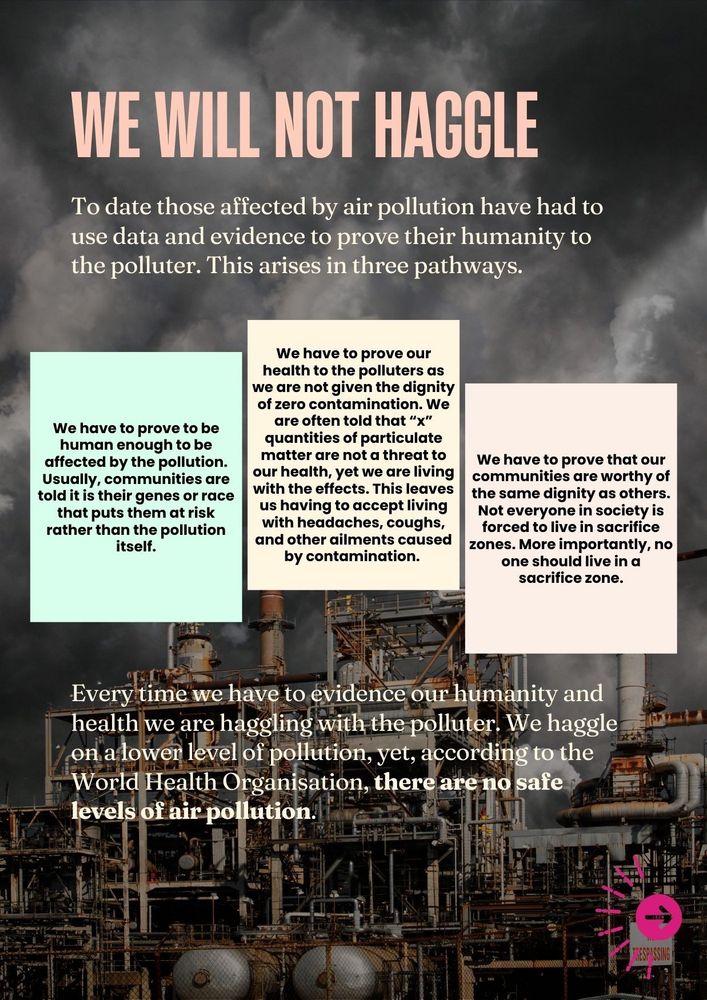
We will not Haggle.
To date those affected by air pollution have had to use data and evidence to prove their humanity to the polluter. This arises in three pathways.
We have to prove to be human enough to be affected by the pollution. Usually, communities are told it is their genes or race that puts them at risk rather than the pollution itself.
We have to prove that our communities are worthy of the same dignity as others. Not everyone in society is forced to live in sacrifice zones. More importantly, no one should live in a sacrifice zone.
We have to prove our health to the polluters as we are not given the dignity of zero contamination. We are often told that “x” quantities of particulate matter are not a threat to our health, yet we are living with the effects. This leaves us having to accept living with headaches, coughs, and other ailments caused by contamination.
Every time we have to evidence our humanity and health we are haggling with the polluter. We haggle on a lower level of pollution, yet, according to the World Health Organisation, there are no safe levels of air pollution.
17.03.2025 10:49 — 👍 0 🔁 0 💬 1 📌 0
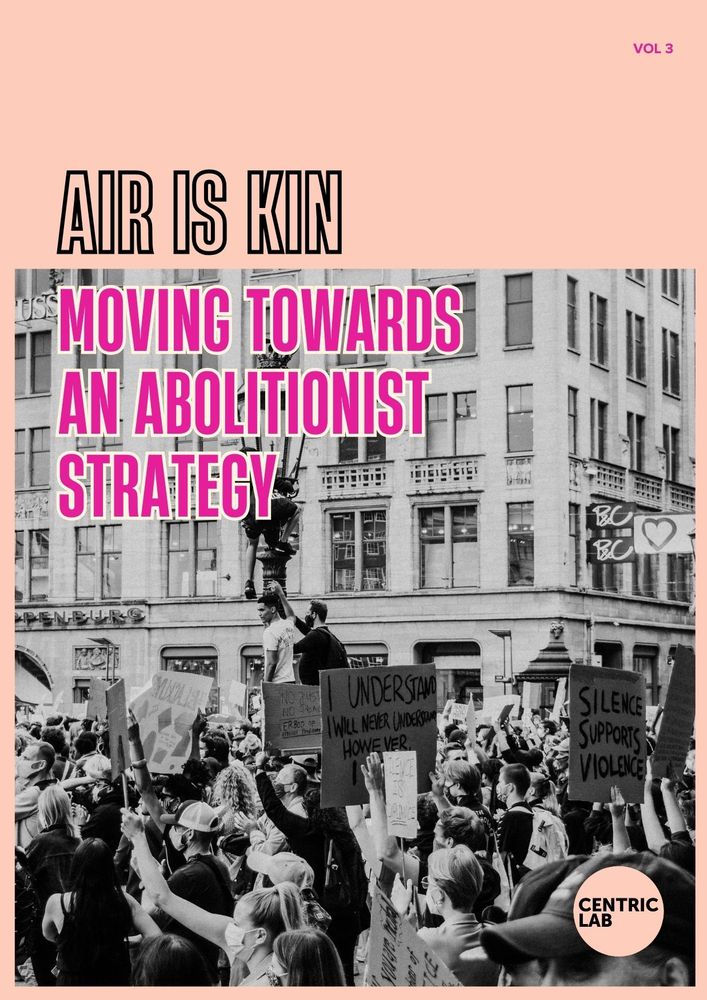
Air Pollution and Abolition.
How might we approach this?
Follow this thread to see some of our thinking...
17.03.2025 10:48 — 👍 0 🔁 0 💬 1 📌 1
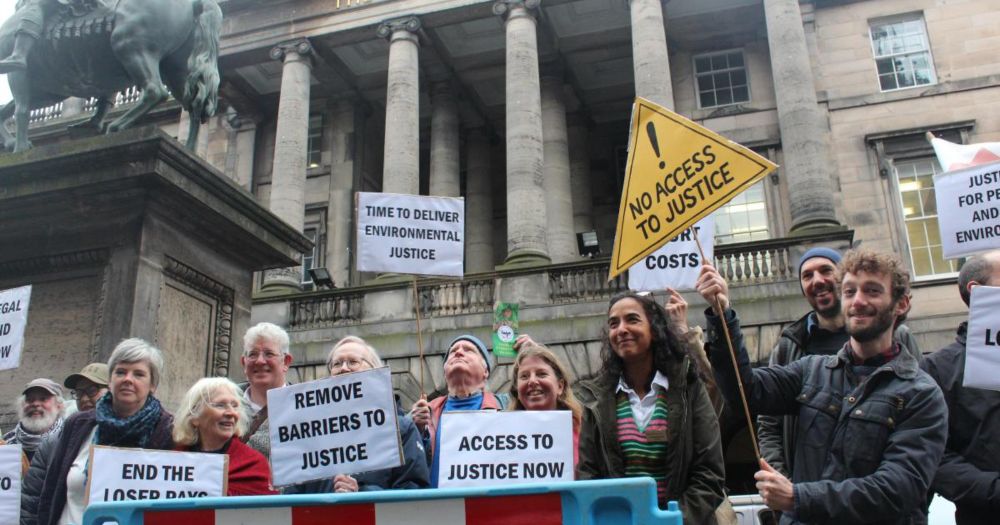
How legal aid reform should work for environmental justice
The Herald has outlined the myriad challenges facing the criminal and civil legal aid system: from a shortage of solicitors, to lengthy delays in…
"Without the credible threat of legal challenge, laws to protect our right to healthy environment will not be enforced and polluters will act with impunity...[for] action on social, environmental & climate justice, then repealing Regulation 15 is a no brainer"
www.heraldscotland.com/opinion/2491...
11.03.2025 18:52 — 👍 0 🔁 0 💬 0 📌 0
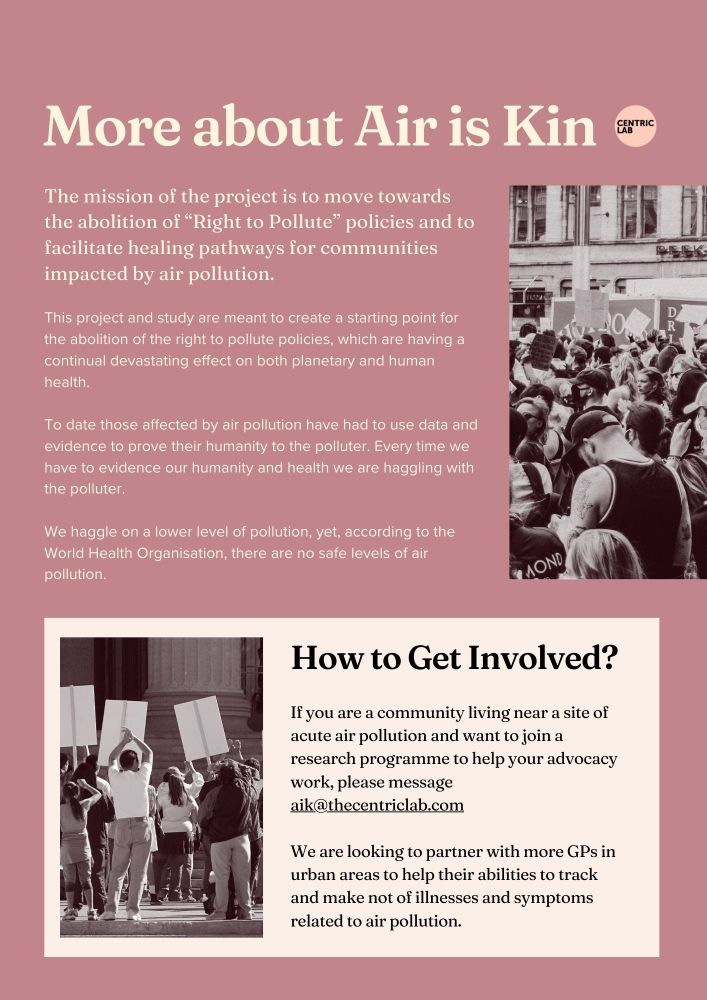
More about Air is Kin
The mission of the project is to move towards the abolition of “Right to Pollute” policies and to facilitate healing pathways for communities impacted by air pollution.
This project and study are meant to create a starting point for the abolition of the right to pollute policies, which are having a continual devastating effect on both planetary and human health.
To date those affected by air pollution have had to use data and evidence to prove their humanity to the polluter. Every time we have to evidence our humanity and health we are haggling with the polluter.
We haggle on a lower level of pollution, yet, according to the World Health Organisation, there are no safe levels of air pollution.
How to get involved:
If you are a community living near a site of acute air pollution and want to join a research programme to help your advocacy work, please message aik@thecentriclab.com
We are looking to partner with more GPs in urban areas to help their abilities to track and make not of illnesses and symptoms related to air pollution.
11.03.2025 13:00 — 👍 0 🔁 0 💬 0 📌 0

A better understanding and definition of health.
The experience of being whole. Not in the sense of perfection, but where our humanness and physiology can come to equilibrium after stress or trauma due to access to resources and tools. Where there are no top down forces deliberately inflicting avoidable injury, stress, or trauma.
11.03.2025 12:59 — 👍 1 🔁 0 💬 1 📌 0
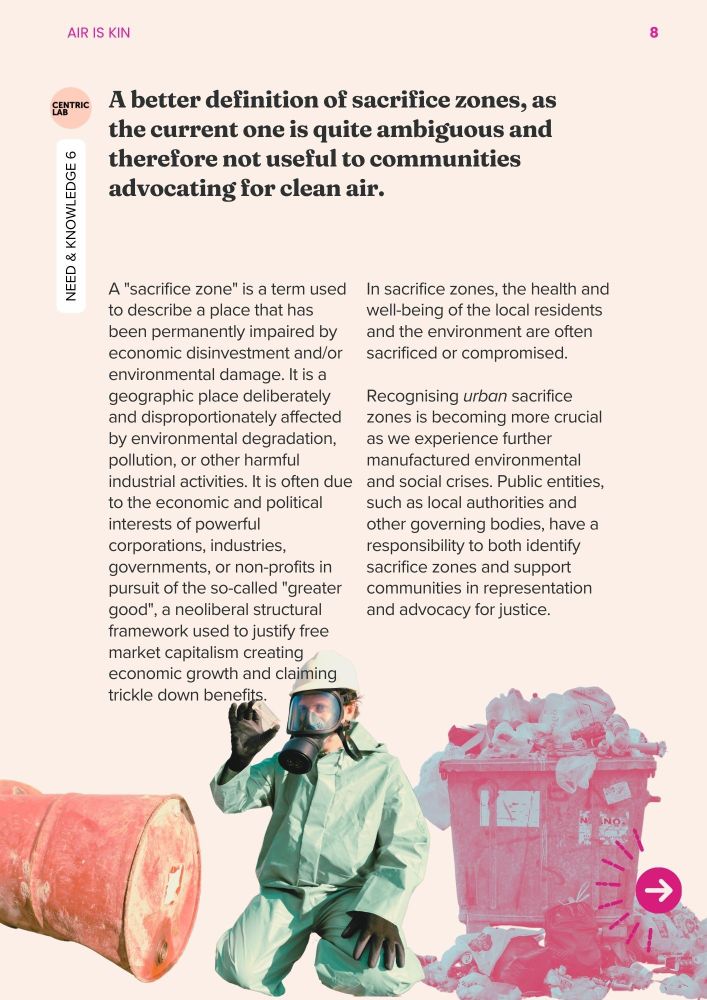
A better definition of sacrifice zones, as the current one is quite ambiguous and therefore not useful to communities advocating for clean air.
A "sacrifice zone" is a term used to describe a place that has been permanently impaired by economic disinvestment and/or environmental damage. It is a geographic place deliberately and disproportionately affected by environmental degradation, pollution, or other harmful industrial activities. It is often due to the economic and political interests of powerful corporations, industries, governments, or non-profits in pursuit of the so-called "greater good", a neoliberal structural framework used to justify free market capitalism creating economic growth and claiming trickle down benefits.
In sacrifice zones, the health and well-being of the local residents and the environment are often sacrificed or compromised.
Recognising urban sacrifice zones is becoming more crucial as we experience further manufactured environmental and social crises. Public entities, such as local authorities and other governing bodies, have a responsibility to both identify sacrifice zones and support communities in representation and advocacy for justice.
11.03.2025 12:59 — 👍 1 🔁 1 💬 1 📌 0
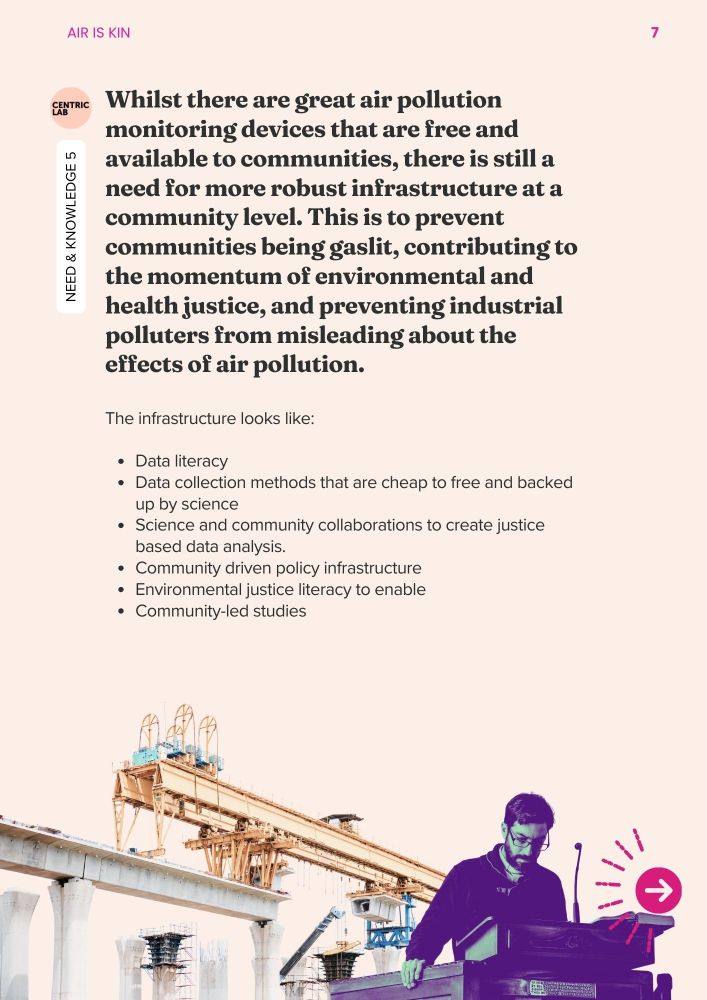
Whilst there are great air pollution monitoring devices that are free and available to communities, there is still a need for more robust infrastructure at a community level. This is to prevent communities being gaslit, contributing to the momentum of environmental and health justice, and preventing industrial polluters from misleading about the effects of air pollution.
The infrastructure looks like:
Data literacy
Data collection methods that are cheap to free and backed up by science
Science and community collaborations to create justice based data analysis.
Community driven policy infrastructure
Environmental justice literacy to enable
Community-led studies
11.03.2025 12:59 — 👍 0 🔁 0 💬 1 📌 0
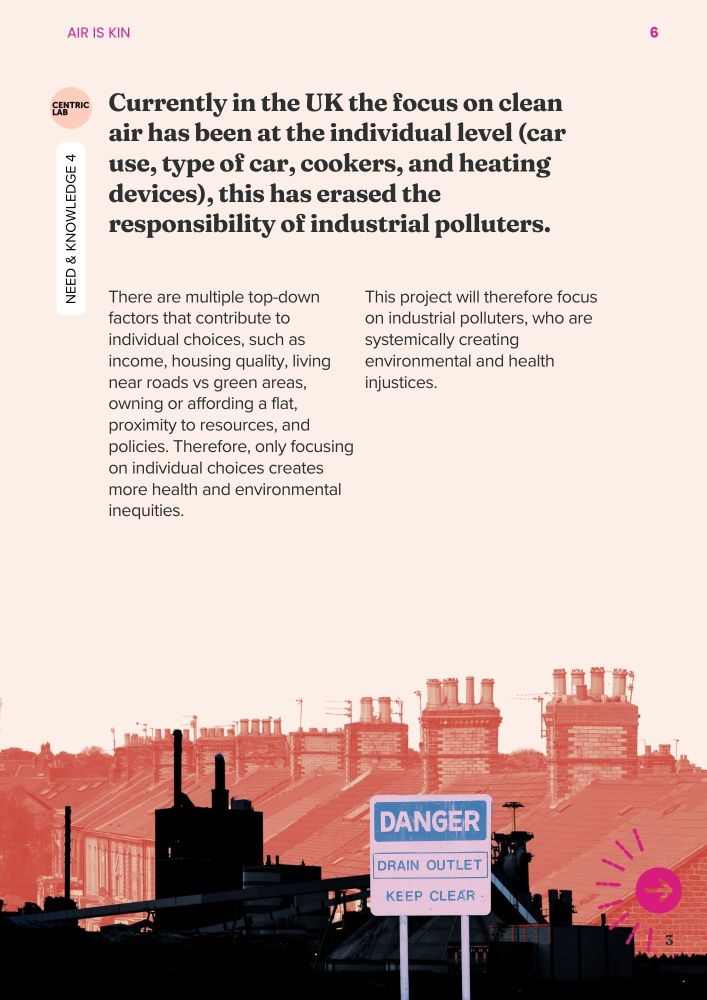
Currently in the UK the focus on clean air has been at the individual level (car use, type of car, cookers, and heating devices), this has erased the responsibility of industrial polluters.
There are multiple top-down factors that contribute to individual choices, such as income, housing quality, living near roads vs green areas, owning or affording a flat, proximity to resources, and policies. Therefore, only focusing on individual choices creates more health and environmental inequities.
This project will therefore focus on industrial polluters, who are systemically creating environmental and health injustices.
11.03.2025 12:57 — 👍 0 🔁 0 💬 1 📌 0
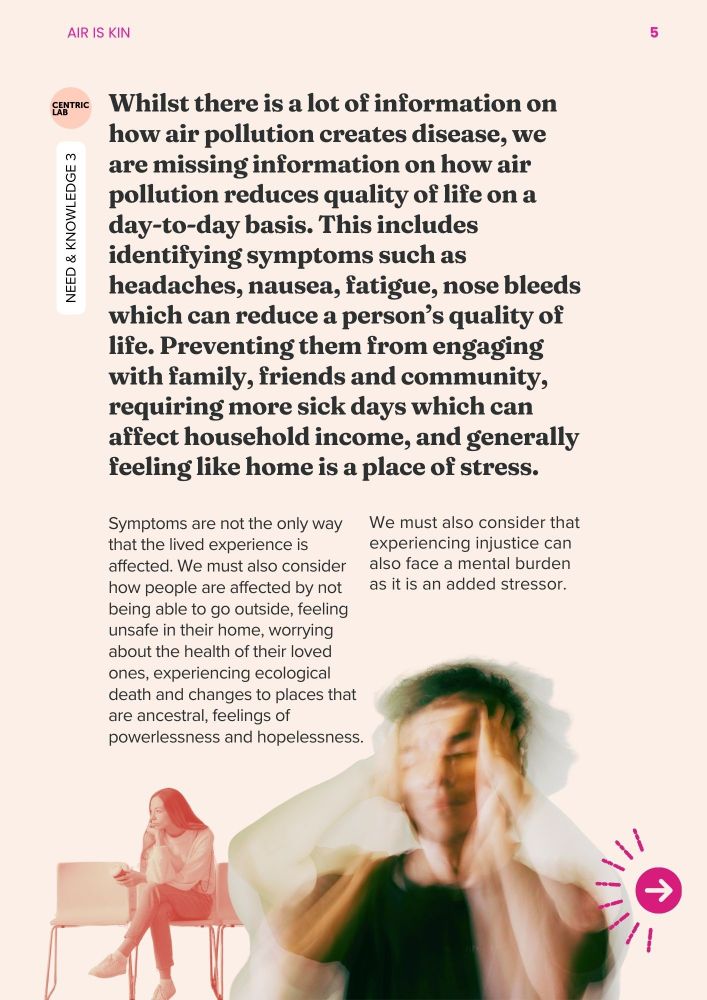
Whilst there is a lot of information on how air pollution creates disease, we are missing information on how air pollution reduces quality of life on a day-to-day basis. This includes identifying symptoms such as headaches, nausea, fatigue, nose bleeds which can reduce a person’s quality of life. Preventing them from engaging with family, friends and community, requiring more sick days which can affect household income, and generally feeling like home is a place of stress.
Symptoms are not the only way that the lived experience is affected. We must also consider how people are affected by not being able to go outside, feeling unsafe in their home, worrying about the health of their loved ones, experiencing ecological death and changes to places that are ancestral, feelings of powerlessness and hopelessness.
We must also consider that experiencing injustice can also face a mental burden as it is an added stressor.
11.03.2025 12:57 — 👍 1 🔁 1 💬 1 📌 0

The centring of lawsuits rather than health justice, means that many communities continue to live within proximity of industrial sites without the adequate infrastructure to respond personally and systemically.
These are places where they experience disproportionate levels of cardiovascular, respiratory, and educational disorders, as well as cancers, while lacking mechanisms to prevent pollution.
Health justice initiatives actively tackles the mechanisms that enable the right to pollute as well as reparations to build health infrastructure
11.03.2025 12:57 — 👍 0 🔁 0 💬 1 📌 0
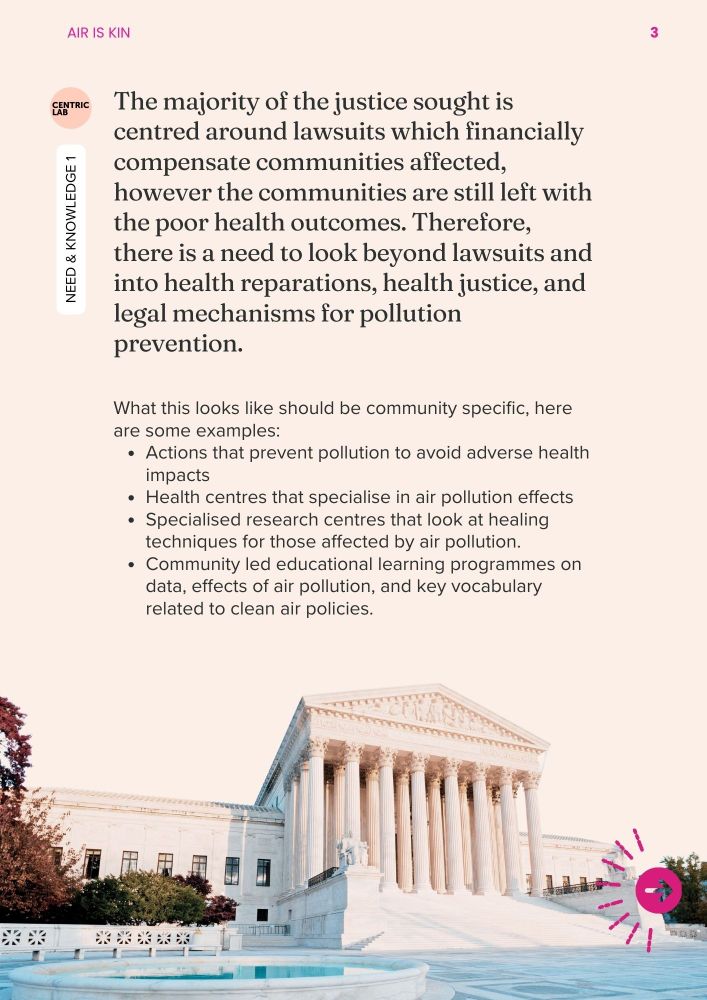
The majority of the justice sought is centred around lawsuits which financially compensate communities affected, however the communities are still left with the poor health outcomes. Therefore, there is a need to look beyond lawsuits and into health reparations, health justice, and legal mechanisms for pollution prevention.
What this looks like should be community specific, here are some examples:
Actions that prevent pollution to avoid adverse health impacts
Health centres that specialise in air pollution effects
Specialised research centres that look at healing techniques for those affected by air pollution.
Community led educational learning programmes on data, effects of air pollution, and key vocabulary related to clean air policies.
11.03.2025 12:55 — 👍 0 🔁 0 💬 1 📌 0

The first three months of the project were dedicated to research on the history of environmental justice and environmental policy.
We combined this knowledge with over five years of our interactions and conversations with community advocates.
Based on these first three months’ research we have identified and are sharing the following needs and knowledges gaps within the space of environmental justice and clean air advocacy
11.03.2025 12:55 — 👍 0 🔁 0 💬 1 📌 0
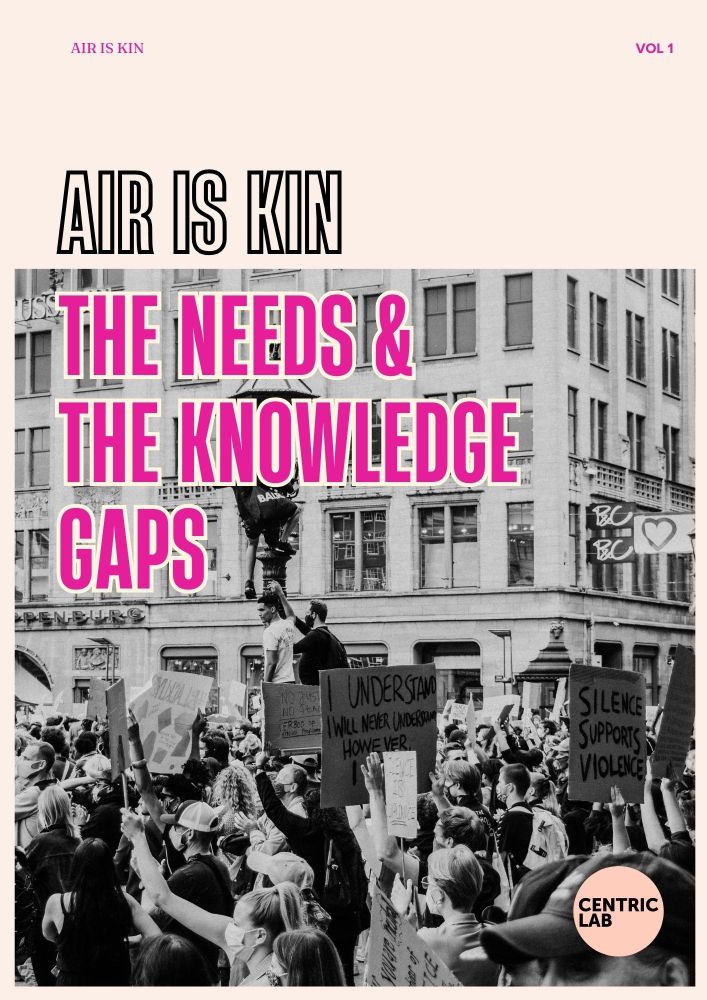
A 🧵 on the first 3 months of our Air is Kin project.
We have identified the following needs and knowledges gaps within the space of environmental justice and clean air advocacy.
11.03.2025 12:55 — 👍 0 🔁 0 💬 1 📌 0
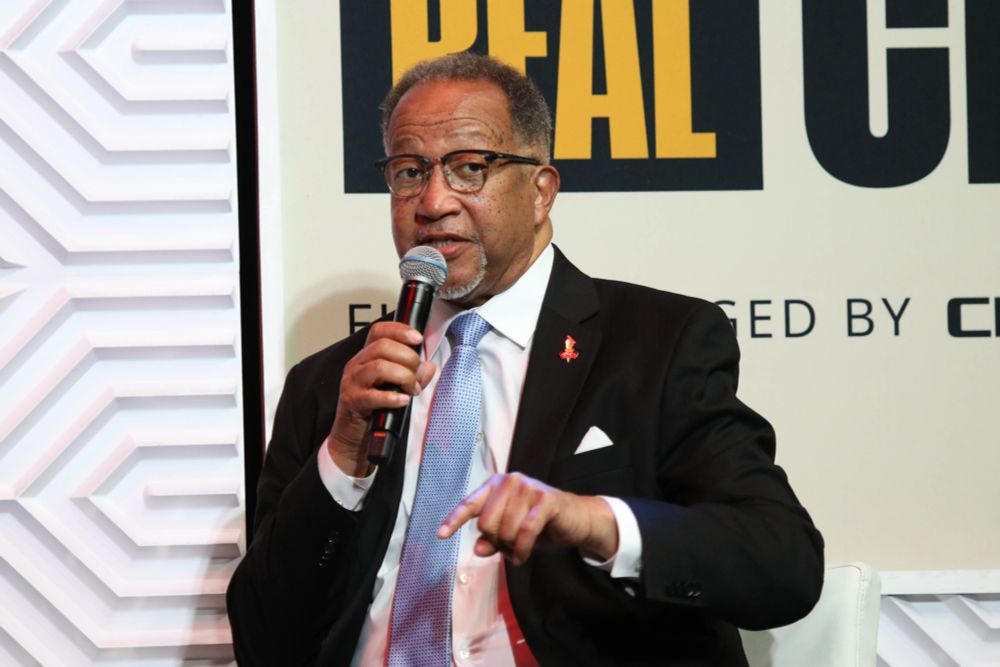
‘Never Let Anyone Break Your Spirit’: How an Environmental Justice Forefather Is Thinking About Our Current Moment - Inside Climate News
Plus some lessons in perseverance inspired by Martin Luther King, Jr., himself.
"They say, ‘Oh, well, we have fresh water now.’ But, they’re going to have to live for the rest of their lives with the contamination of their bodies. That’s why, in a number of cases, the struggle for environmental justice is a matter of life and death."
insideclimatenews.org/news/2402202...
07.03.2025 12:35 — 👍 0 🔁 0 💬 0 📌 0
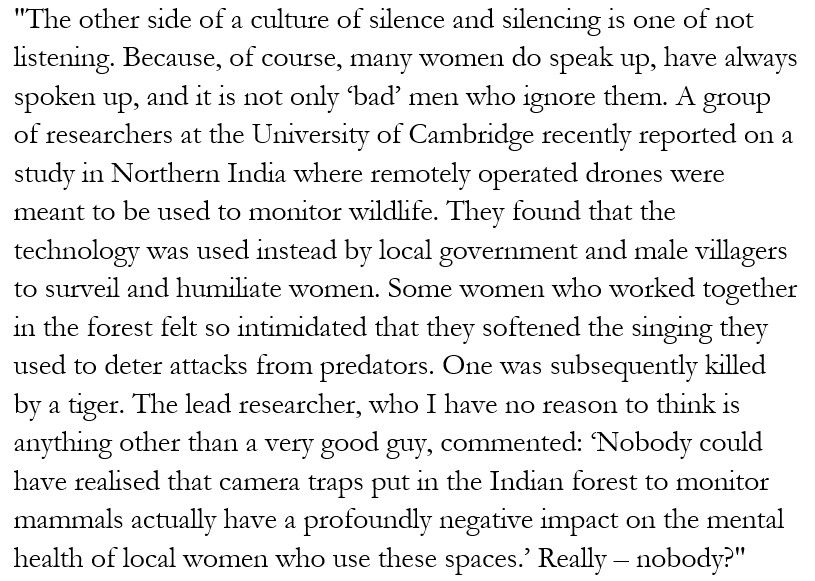
"The other side of a culture of silence and silencing is one of not listening. Because, of course, many women do speak up, have always spoken up, and it is not only ‘bad’ men who ignore them. A group of researchers at the University of Cambridge recently reported on a study in Northern India where remotely operated drones were meant to be used to monitor wildlife. They found that the technology was used instead by local government and male villagers to surveil and humiliate women. Some women who worked together in the forest felt so intimidated that they softened the singing they used to deter attacks from predators. One was subsequently killed by a tiger. The lead researcher, who I have no reason to think is anything other than a very good guy, commented: ‘Nobody could have realised that camera traps put in the Indian forest to monitor mammals actually have a profoundly negative impact on the mental health of local women who use these spaces.’ Really – nobody?"
How epistemic injustice in research kills:
This essay (www.lrb.co.uk/the-paper/v4...) reminds us: When the excuse for bad research is "‘Nobody could have realised..." we should always respond with "Really – nobody?"
"The other side of a culture of silence and silencing is one of not listening.
01.03.2025 01:25 — 👍 69 🔁 33 💬 0 📌 3
Congratulations Nataly! This is incredible, inspiring, and insightful piece of work! It is a reflective essay on the integration of groundbreaking research with Indigenous / Land-Kinned knowledge, with an insightful focus on Bitter Potatos and their deep connection to the Aymara and Quechuan Peoples
27.02.2025 14:03 — 👍 4 🔁 1 💬 0 📌 0
Proud to be releasing my piece/essay that explores the aspects of my potato research that fascinate me so much. The essay focuses on my time working alongside Indigenous agricultural and botanical experts in the Andean regions of Bolivia and Peru.
Big thanks to @thecentriclab.com for their support
27.02.2025 12:49 — 👍 7 🔁 4 💬 0 📌 2
We design alternative mental health help systems for Black and racially minoritised communities in London. #BlackMentalHealthMatters
Evolutionary genomics, metabolites, global biodiversity, Indigenous peoples and crops | 🥔 Postdoc at NHM Denmark and RBG Kew | https://www.DNAtaly.com/
We are Careful Trouble. We are a research studio and a social enterprise, helping make technologies work better for more people, more of the time.
🌍 carefultrouble.net
Just starting out in this place.
Editor-in-Chief of Cities & Health journal. https://www.tandfonline.com/journals/rcah20
Head of Health Effects of Air Pollution @impurbanhealth.bsky.social
Co-Founder @ Power Up North London
Expect music, capybara, #coys, other silly chat
Views my own
More than 2 million Londoners are living in poverty. We fund organisations fighting to change that. Follow for data, research & stories on inequality in London.
www.trustforlondon.org.uk
City Bridge Foundation is a 900-year-old charity & London’s largest independent charity funder. We run Tower Bridge, London Bridge, Southwark Bridge, Millennium Bridge & Blackfriars Bridge, at zero cost to the taxpayer. www.citybridgefoundation.org.uk
Official Bluesky feed for The Kresge Foundation. We expand equity and opportunity for people with low incomes in cities across the U.S. We work nationally and go deep in Detroit, Fresno, Memphis, and New Orleans.
Kresge.org
Helping cities & urban areas become healthier places for everyone. Tackling health inequalities w/ @gsttfoundation.bsky.social
Get our newsletter 📨 http://bit.ly/IoUHnews
Website: https://urbanhealth.org.uk/
🏳️🌈🇨🇦🐧 Conservation, curator in charge of birbs, island hopper, climber, connoisseur of fine teas, biscuit fiend, v left, queer af, Erdős–Bacon = 8, he/him.
📍 Tring & Milton Keynes, UK
https://linktr.ee/albnd
System change | transition | restoring our relation with the world | chocolat | autumn leaves
Political Economist @neweconomics.bsky.social but views here are my own. Self-defined artist, philosopher, listener, learner, lover. I am dedicated to creating beauty and fighting for interspecies justice. 🌎🌍🌏
We design ownership models for a democratic and sustainable economy.
http://common-wealth.org
linktr.ee/common.wealth
We are a migrant-led national organisation empowering migrants to speak out, challenge perceptions and change public debate, in the media and to policymakers. Offices in London, Glasgow and Birmingham.
Place Matters works in partnership with organisations and communities to accelerate the impact of community-centred place-based change.
Antipode: A Radical Journal of Geography, publishing (and funding, through the non-profit Antipode Foundation) the very best radical research
Writer, Teacher, Researcher | on Epistemic Practices in Health Systems and Global Health | @sydney.edu.au | Views expressed here are my own.















![Another World is Possible
Abolishing at its core is the official ending of an event, law, policy, or even state of mind. There is also a political element to the word, that has its roots in the Black and Indigenous Abolition movements which ended chattel slavery in what is illegitimately known as the Americas. The contemporary abolitionist movement refers to the dismantling of the ‘prison-industrial complex’ (PIC) - comprising “overlapping interests of government and industry that use surveillance, policing, and imprisonment as solutions to economic, social and political problems” (Critical Resistance, 2023). PIC abolition is centrally concerned with breaking cycles of violence, making legible where carcerality acts and is reproduced in proposed solutions to violence. Crucially, though, PIC abolition commits to being in perpetual practice of “rehears[ing] the social order coming into being” (Wilson Gilmore & Gilroy, 2020).](https://cdn.bsky.app/img/feed_thumbnail/plain/did:plc:orvzpvxn4wlzgprun3j3yucg/bafkreihy5ghxnnexul4zi2vxbv5mkpkuwtpbkzh2g5cn3yb3ja7djrudiq@jpeg)



